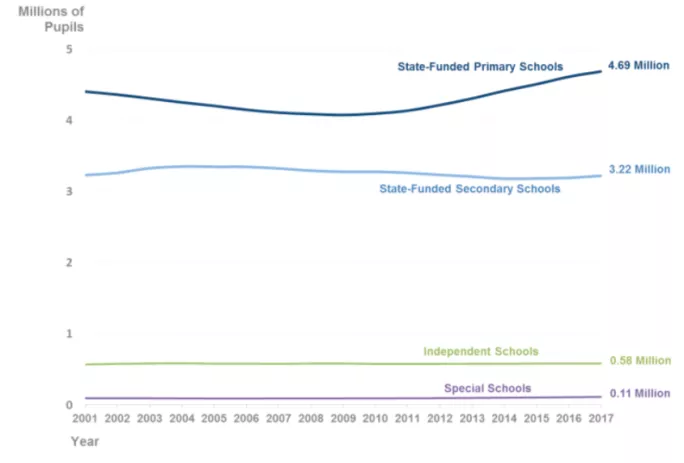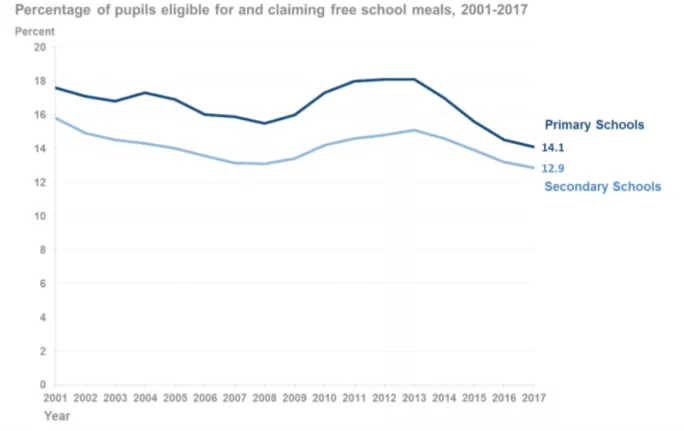The number of “titan” primary schools with more than 800 pupils continues to grow, while the number of independent schools is falling, Department for Education statistics reveal today.
Here are some of the main findings of the latest schools census:
1. The number of pupils is growing
Between January 2016 and January 2017 the number of pupils across all school types rose by 110,000.
Most of this increase was still in primary schools, with 74,500 more pupils in January 2017 than in 2016.
However, a greater increase was also seen in secondary schools than in recent years, with numbers increasing by 29,700 between 2017 and 2016, compared to an 8,700 increase between 2015 and 2016). In addition there are 4,400 more pupils in special schools.
The total number of pupils, across state and independent schools was 8,669,085.
Source: Schools, Pupils and their Characteristics, Department for Education
2. Fewer pupils are eligible for free school meals
In January 2017, for all schools types, 14 per cent of pupils were eligible for and claiming free schools meals - the lowest proportion since 2001, when the department began collecting pupil level information.
The proportion was 15.1 per cent last year. It has fallen for each of the five years since 2013, when the figure was 18.3 per cent.
The data published today states: “Entitlement to free school meals is detemined by the receipt of income-related benefits. As the number of benefit claimants decreases, the proportion of pupils eligible for free school meals also falls.”
Source: Schools, Pupils and their Characteristics, Department for Education
3. The number of “titan” primaries has risen.
There are 122 primary schools with more than 800 pupils, up from 109 last year and 87 the year before.
Four primary schools had between 1,201 and 1,300 pupils.
4. The number of independent schools is falling.
There are 2,297 independent schools recorded in this year’s census, down from 2,311 last year and 2,411 the previous year.






